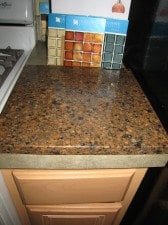
For almost 20 years, appliance shopping means deciding if we want to spend extra money for ENERGY STAR products.
Today, you can find ENERGY STAR labels on many of the products which otherwise would be energy-hogs, and these products are not necessarily more expensive than their non-Energy Star competitors.
In fact, one of the requirements for a product to obtain ENERGY STAR certification is that if it costs more than a less-efficient counterpart, purchasers will recover their investment in increased energy efficiency through utility bill savings within a reasonable period of time.
The Energy Star Australia website does a great job of summarizing the major points in understanding why using ENERGY STAR products is important.
What is ENERGY STAR?
ENERGY STAR is an international standard for energy efficient electronic equipment. It was created by the US Environmental Protection Agency in 1992 and has now been adopted by several countries around the world, including Australia.
How does it work?
ENERGY STAR reduces the amount of energy consumed by a product by either automatically switching it into a ‘sleep’ mode when it’s not being used and/or reducing the amount power used when in ‘standby’ mode.
Office equipment
While most office equipment now has the potential to save energy in this way (i.e. it is ENERGY STAR compliant), not all machines, particularly PCs, have actually been enabled so that the energy saving features are activated. Ask your IT or maintenance staff to help, or check out our Step-by-step instructions on enabling ENERGY STAR features on computers.
Home electronics products
ENERGY STAR compliant home electronics products have their energy saving features already activated when you buy them. If your TV, VCR or DVD complies with the ENERGY STAR standard, it will consume around 75% less energy in standby mode than standard products do. Because products like these spend more than 60% of their time on standby, this can add up to a significant reduction in energy use.
What is standby power?
Standby power is the electricity consumed by appliances when they are switched off or not performing their primary function. It’s sometimes called leaking, vampire or phantom electricity.
If your computer, printer, fax or photocopier complies with the ENERGY STAR standard, it can automatically switch itself into a power saving sleep mode after a certain amount of idle time. In the case of computers, the monitor will go dark and other components, such as the hard disk and main processor, will reduce the amount of power they’re using by about two thirds.
The time it takes for equipment to ‘go to sleep’ can easily be set to suit the way you work. And as soon as you need to use the equipment again, you can simply press a key or move the mouse and it ‘wakes’ up, ready to operate, with all your settings, programmes and documents exactly as you left them.
Why is it important?
Obviously, the best way to make sure a product is not consuming electricity when idle is to switch it off at the power point. Not only will this save you money; it can also reduce the risk of accidental fire.
But the fact is, standby power accounts for an increasing proportion of the world’s energy use. In ‘developed’ countries, it can represent up to 12% of household electricity consumption. In Australia, standby power could be costing consumers around $500 million every year — and resulting in greenhouse gas emissions of more than 5 megatonnes (CO2 equivalent) annually. Worldwide, standby power is estimated to account for as much as 1% of global greenhouse emissions.
Most of the energy used by products on standby is not performing any useful function. A small amount can be needed for maintaining memory or an internal clock, remote control activation or other features. But most standby power is wasted energy. ENERGY STAR enabled products minimise this waste.
Did you know?
- A computer and monitor (without ENERGY STAR enabled) left on for a year generate the same amount of CO2 as a car travelling from Sydney to Perth.
- Printers spend approximately 95% of their time sitting idle.
- Fax machines are often left on continuously, but their actual use time amounts to only about 1 hour per day.
- Screensavers do not reduce the power consumption of a computer monitor unless they actually turn the monitor off.
- Home electronics products currently use anywhere between 1 watt and 20 watts on standby, and can be in this mode for between 16 and 22 hours per day.
My computer and satellite receiver have ENERGY STAR labels on then, but I’m not sure about everything else.
What do you own that is ENERGY STAR?








